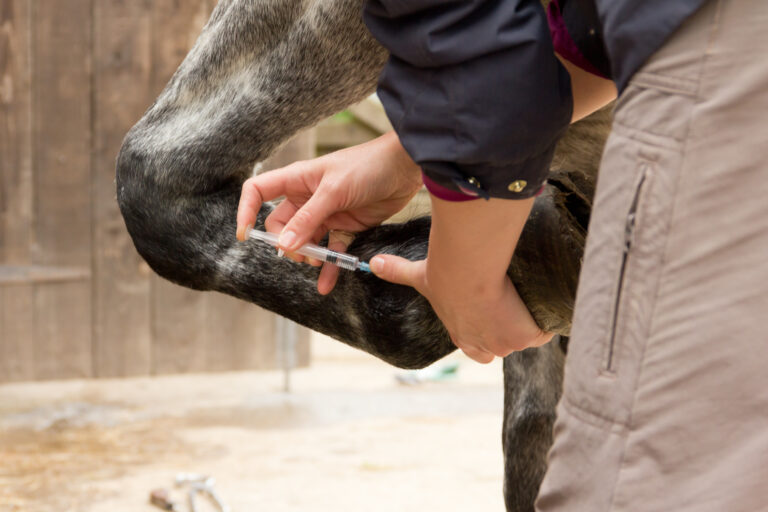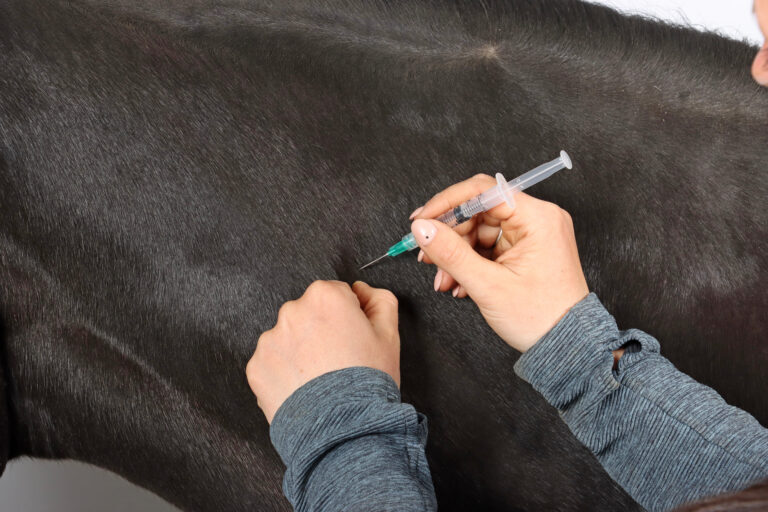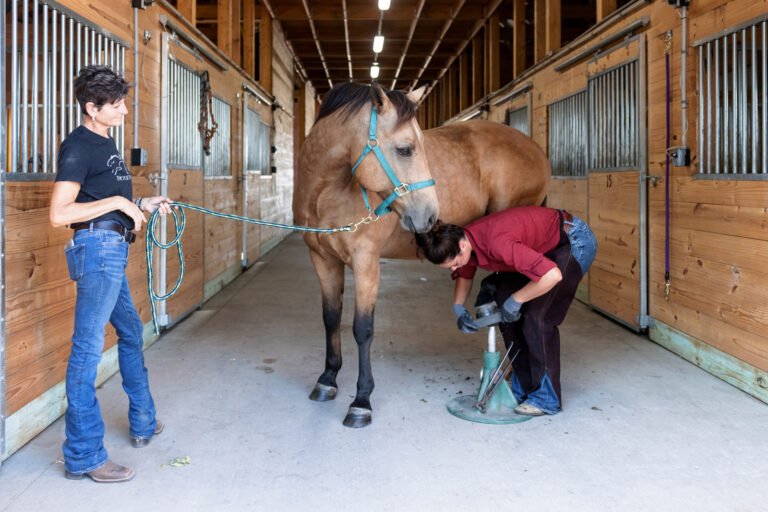
Even after nearly 20 years in the equine veterinary industry, Jean-Yin Tan, DVM, Dipl. ACVIM, continues to experience incidents stemming from a mismatch between a client’s expectations of an equine veterinarian’s demographics and her appearance.
“For example, I was on a farm call consulting on a case for a referring veterinarian, and the client threw her arms up and exclaimed, ‘All I want is for a man to drive up in his truck and take care of my horse,’” she says.
Today, women make up the majority of equine veterinarians. According to AVMA 2021 statistics, females account for 56.5% of equine practitioners, and 85% of students are female. Racial and ethnic minority groups comprise only a small percentage of practicing veterinarians. According to U.S. Bureau of Labor Statistics 2023 data, 90% of all veterinarians (small and large) are white, 1.3% are Black, 5.9% are Asian, and 7.9% are Hispanic or Latino.
In 2020, Tan wrote an article for The Horse titled It’s Time to Talk About Race in the Equine Veterinary Profession. In the piece, she shared experiences of colleagues from diverse backgrounds, including one who had a client say, “I never met an Asian large animal veterinarian.” Another veterinarian with a Middle Eastern and American background believes “it takes a little extra to shine.”
“I believe that most people are unaware that there is an issue with diversity, equity, and inclusion in the industry,” says Tan.
Often, diversity is thought of in terms of gender, sexual orientation, and ethnic background. It also includes age and differing social backgrounds.
“When I was a student, I heard a common phrase among some of my peers: ‘I can’t become an equine vet because I didn’t grow up in the horse world,’” says Alexandra Fielding, DVM, a large animal surgery resident at North Carolina State University College of Veterinary Medicine. “I think we need to challenge this mindset if we want to grow our industry and change the exclusion framework to inclusion.”
DEI in Veterinary Medicine Is the Right Thing to Do
Embracing DEI is simply the right thing to do. Multiple studies have shown workplaces that prioritize DEI benefit. Focusing on DEI also improves culture. Both gender and ethnic diversity are linked to an “increased likelihood of above-average profitability,” according to the global management consulting firm McKinsey & Company.
“It makes business sense to create a culture of belonging for your employees,” says Tan. “Seeing the world through the lens of diversity, equity, and inclusion can improve overall employee well-being and practice culture and make your practice more financially successful.”
Diversity alone is not enough. Inclusion and equity are equally important. When people have equal opportunities for professional development and feel like they are part of a group, they feel a sense of belonging.
“Inclusion goes hand in hand with retention by fostering a sense of belonging within the equine veterinary community,” Fielding says. “We should not only encourage and develop paths for professionals from all walks of life to join the equine veterinary community but also ensure that everyone is respected and appreciated for their unique cultural and social differences within our industry.”
When people feel a sense of belonging in the workplace, job performance doubles, turnover cuts in half, and the number of days an employee calls in sick decreases by 75%, according to the coaching platform BetterUp’s 2019 study.
“Many are aware that the equine veterinary industry is facing a shortage of equine vets from poor retention and few veterinary students selecting this occupation,” Tan says. “It isn’t a stretch to believe that taking steps to make the profession more welcoming and inclusive of people from all backgrounds and to improve their experience once in the profession would help to solve the equine veterinary shortage.”
The importance of diversity, equity, and inclusion extends beyond supporting practice staff. Valuing DEI also impacts client relationships.
“Recognizing the importance of DEI within our practice leads to better understanding and service to the needs of our clients,” Fielding says. “Depending on regional geography, local equestrian disciplines, and community, the equine veterinary industry serves a wide variety of clientele. Educating ourselves on DEI concepts can help us connect to our clients in a new way and ultimately provide better care to patients as well.”
Start Within


“I strongly believe that change starts from within. Educating yourself is first and foremost,” Tan says. “I recommend taking the Harvard Implicit Association Test to start by recognizing any individual biases that may exist.”
Tan adds that educational opportunities can include enrolling in a certificate program, listening to podcasts, reading fiction or nonfiction books on the subject, or simply following an influencer on Instagram, YouTube, or TikTok. Some resources she recommends include Journey for Teams, blendVET, Purdue University’s diversity and inclusion certificates, and the American Association of Veterinary Medical Colleges’ Diversity & Inclusion on Air podcast.
The Journey for Teams is a program the American Veterinary Medical Association (AVMA) and the Veterinary Medical Association Executives (VMAE) developed to deliver DEI knowledge to practices and provide ways to integrate DEI principles within workplaces through team dialogue, Fielding explained.
“The video modules are digestible, tailored to veterinary medicine, and have guides for both the participants and the Navigator (the leader), along with references and resources,” she says. “It can easily fit into a staff meeting, as it only takes about 15 minutes to complete, and it challenges your team to develop actionable items together.”
Continuing education events are increasingly including sessions about DEI. The American Association of Equine Practitioners (AAEP) recorded most DEI sessions from the 2023 Convention, which are available for on-demand viewing. Fielding encourages veterinarians to challenge themselves and attend a session.
“Then, think about those concepts as you attend other practice management sessions,” she says.
Tan adds, “It is natural to view the world through your own lens, and it can be hard to step inside someone else’s shoes when you aren’t aware of what kind of challenges they face. Educating yourself can offer that slightly different lens to view the world with and can be eye-opening.”
Education can start as simply reframing the way you think about scenarios. Tan offers these examples of common scenarios that are microaggressions:
- Receiving negative feedback from clients regarding a staff member that isn’t based on performance but reflects implicit bias or prejudice.
- Assuming a client can’t afford care and offering lower-cost options because of their demographics.
- Assuming your veterinary associate doesn’t want to advance or purchase your practice based on their family situation.
“There is no playbook on how to start incorporating DEI into one’s practice, and don’t give up if the first thing you try doesn’t work,” Fielding says. “Even though I am early in my career as an equine veterinarian, I highly encourage the practice owners and/or managers looking to bring DEI into their practice to reflect upon how they fit into their community and their knowledge of DEI concepts. Embracing DEI is not a ‘one-and-done’ activity—it takes practice, commitment, and continual learning and unlearning, for that matter.”
Get Involved in Veterinary DEI Initiatives

In 2020, the AAEP formed the Diversity, Equity, and Inclusion Task Force to assess barriers to inclusion within equine practice and the organization. A standing DEI Committee was formed in January 2022 to continue the Task Force’s work.
“Some of our larger initiatives have been to develop opportunities for members to meet in safe spaces, such as at the Convention,” says Fielding, who has served on the committee since its inception. “At the 2023 Convention, we organized a half-day session on ‘Understanding DEI for the Equine Veterinary Profession’ as well as a Table Topic on ‘How Diversity, Equity, and Inclusion Can Benefit Your Practice’ and a ‘DEI 101’ free training session with a fantastic educator and facilitator, Kim D’Abreu.”
Fully embracing diversity includes encouraging and leveraging different ways of thinking. Welcoming various perspectives offers opportunities to find a variety of strategies to solve challenges and accomplish goals.
“By taking the time to understand a little more about one another and how our backgrounds influence our connection to the workplace, practices that utilize DEI concepts in their procedures, policies, and planning will see employees develop a further sense of belonging to their workplace and perform better because everyone’s unique abilities will be celebrated and utilized to their full capabilities,” Fielding says. “While I don’t imagine every private practice will be forming their own DEI committees, I encourage them to integrate principles of DEI into their practice on every level, from how they interact with their clientele to how they can create a more inclusive environment for their personnel.”
Related Reading
- How DEI Can Benefit Your Veterinary Practice
- Is There a Gender Wage Gap in Equine Practice?
- Culture Matters for Veterinarians
Stay in the know! Sign up for EquiManagement’s FREE weekly newsletters to get the latest equine research, disease alerts, and vet practice updates delivered straight to your inbox.




